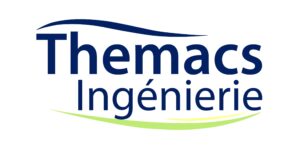Emissivity and temperature measurement in the Namib Desert
Posté le 28 April 2020 dans News
Emissivity and temperature measurement in the Namib Desert
ESA (European Space Agency) monitors the earth’s surface temperature. To allow unbiased measurement, a Benchmark has been organized at several points around the globe to measure the directional emissivity of different soils and their temperatures.
The research teams involved were that of KIT (karlsruhe institute of technology), ONERA, NPL (National Physical Laboratory) and THEMACS Engineering. We have found that in the Namib Desert gravel and sand have an infrared spectral behavior which greatly varies the emissivity in the ESA satellite observation domain.
Study of the emissivity of soils in the Namib desert
Emissivity measurements have been undertaken in the Namib Desert by THEMACS Engineering with the EM3 emissometer configured in the 8-12µm band.
In Figure 1 we can see the method used to perform the measurements as well as a measurement table reflecting the measurements made in situ.
Because of the dispersion of the measurements it seemed useful to bring back samples to measure them in the laboratory.
Measurements were made with a Fourier transform spectrometer (Figure 2). In figure 2 we can see the measured samples. These are locally collected sand and gravel. These two types of products are found in unequal proportions. Since their emissivities are significantly different, depending on the wind conditions, the sand / gravel ratio can strongly affect the emissivity of the whole. The spectral measurements are presented in Figure 3

Figure 4
Principle of the measurement system in the Namib Desert (left). The red arrow shows the area targeted by the camera as well as the luminance references (A). On the right the corresponding thermal image with the 3 reference zones and 2 zones on the ground.
Measurement of surface temperatures (surf 1 and 2), reference measurements (White and Black) as well as measurement of the temperature of the radiant environment (aluminium).

Figure 5
Our team is available to give you expert help and advice





